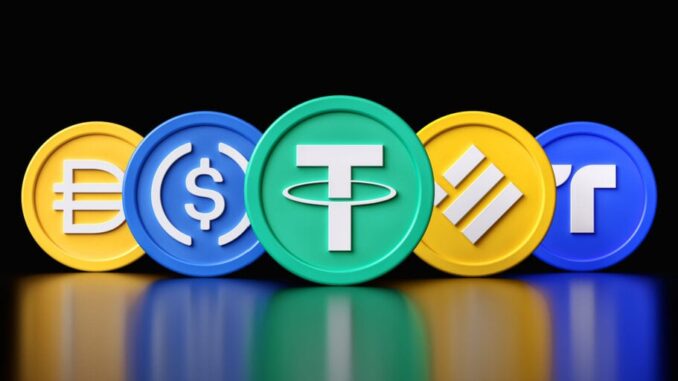
[ad_1]
With the non-profit stablecoin rating agency Bluechip off to the races, so too are concerns around how legit its rankings are.
After all, how has BUSD, a stablecoin that the New York State Department of Financial Services (NYDFS) recently halted, earned the top ranking, while USDT, the market’s largest stablecoin by market cap, is at the bottom of the barrel?
It all boils down to something called SMIDGE, the six qualities that Bluechip measures: Stability, management, implementation decentralization, governance, and externals.
So, no, regulatory crackdown in one form or another isn’t a metric. That’s because that’s not its job, Bluechip’s chief economist Garett Jones tells Decrypt.
“We decided that our job is not to carry water for government regulators,” he said. “The rating itself is about whether this is a good business plan, whether this is a good, safe plan for a stablecoin. It is not whether government regulators have this in their targets.”
Though BUSD receives an “A,” there is still a disclaimer next to that rating referring to the NYDFS action.
As for USDT’s “D,” it’s all about that audit.
“The audit is crucial,” said Jones. “I’ve done some game theory research, which makes me worry a lot about trustworthiness. Our rating director Vaidya comes from an accounting background. He wants to see the audit, partly because that’s the norm. I want to see the audit, because if I don’t, what’s that a signal on?”
Looking specifically into the concerns around Tether, the stablecoin provider can easily improve their rankings, Bluechip says.
The agency recommends that the stablecoin issuer disclose the names of its custodians; provide transparent redemption timelines akin to New York-based stablecoins like Gemini’s GUSD; and, finally, lower the redemption ceiling to $5,000 instead of $100,000.
Another interesting sighting high up the rankings were decentralized stablecoins, specifically Liquity’s LUSD–which earned an “A”–and MakerDAO’s DAI.
The reasons for this, though, boil down to one word: Overcollateralization.
Where BUSD and USDT trust a third party to hold an equal value of any number of assets to match the value of all those stablecoins on the market, LUSD and DAI instead rely on users depositing more collateral than they can borrow in exchange for the stablecoins.
It’s hugely inefficient, but it’s the trade-off one takes for omitting that trusted third party. It’s also mega-safe, per Bluechip.
“We ran some very simple value-of-risk tests and even on the worst 30-day period, at its current collateralization under ETH, Liquity [LUSD] would still be over collateralized,” Jones said.
Essentially, this thing can handle a ton of volatility before folding.
Doing anything outside of this is “literally impossible,” he added—referring to the uncollateralized varieties—unless an eccentric billionaire, for example, was willing to put their reputation and heaps of money on the line to be the undercollateralized stablecoin’s unenviable backstop.
As for the demise of Terra—the market’s harshest lesson in attempting the impossible—this was something Jones claims to have seen coming all the way back in 2017.
“That’s the first time I heard people talking about running full seigniorage coins,” Garrett told Decrypt. “Coins where the backing was just the governance token. I explained very clearly to everyone I could meet, why this would not work, and why it was set up for failure. It could be like St. Peter walking on water, where he was able to do it for a while, and then it all falls apart. I didn’t rule that out, I didn’t say it can’t work for a minute, or it can’t work for a year. It’s that someday people will stop believing it and then it all falls apart.”
For now, it’s just 15 coins on the list, but that’ll soon change in August. Bluechip expects to add a few more tokens to its list, surely attracting another wave of criticism.
Decrypting DeFi is our DeFi newsletter, led by this essay. Subscribers to our emails get to read the essay before it goes on the site. Subscribe here.
Stay on top of crypto news, get daily updates in your inbox.
[ad_2]
Source link




